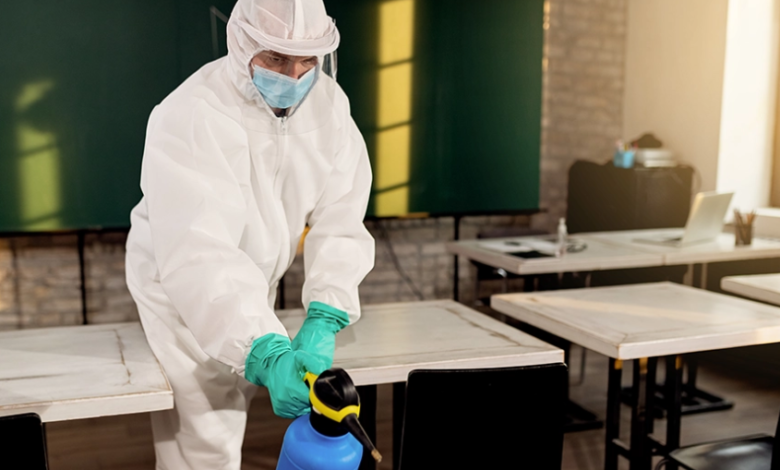Bedbugs in College Dorms: Prevention & Treatment

Introduction
College dorms are bustling hubs of student activity, where young adults live, study, and socialize. Unfortunately, these close living quarters also create the perfect environment for bedbugs to thrive. Bedbugs are small, parasitic insects that feed on human blood, often causing itchy bites and significant stress. Once they infest a dorm room, they can spread quickly to neighboring rooms, making prevention and early treatment essential.
This article explores how bedbugs enter college dorms, how to prevent an infestation, and the best treatment options if bedbugs are already present.
How Bedbugs Enter College Dorms
Bedbugs are excellent hitchhikers, and they don’t discriminate based on cleanliness. They can infest even the tidiest dorm rooms if given the opportunity. Here are the most common ways bedbug control ( væggelus bekæmpelse ) enter college housing:
- Used Furniture & Mattresses – Many students buy or accept second-hand furniture, mattresses, or bedding, which may already harbor bedbugs.
- Luggage & Backpacks – Students traveling home or staying in hotels can unknowingly bring bedbugs back in their bags.
- Shared Laundry Facilities – Bedbugs can cling to clothing and spread through communal washers and dryers.
- Visitors & Roommates – Guests or roommates may carry bedbugs from infested areas into the dorm.
- High Turnover of Residents – With students moving in and out frequently, bedbugs have more opportunities to spread.
Signs of a Bedbug Infestation
Early detection is key to preventing a full-blown infestation. Look out for these common signs:
- Bites on the Skin – Small, red, itchy welts in a line or cluster (often on arms, legs, or neck).
- Blood Stains on Sheets – Tiny rust-colored spots from crushed bedbugs.
- Dark Spots on Mattresses – Bedbug excrement leaves small black or brown marks.
- Shed Skins & Eggs – Tiny translucent shells or white oval eggs in crevices.
- Musty Odor – A strong, sweet smell in severe infestations.
If you notice any of these signs, report them to dorm management immediately. For more read https://vaeggelus-fri.dk/
See also: Smart Landscaping Hacks Professionals Swear By
Preventing Bedbugs in College Dorms
Prevention is always better than treatment. Follow these steps to minimize the risk of bedbugs in your dorm:
1. Inspect Your Living Space Regularly
- Check your mattress seams, bed frame, and furniture for signs of bedbugs.
- Use a flashlight to look in cracks, behind headboards, and inside drawers.
2. Be Cautious with Second-Hand Items
- Avoid used mattresses or upholstered furniture unless thoroughly inspected.
- If you must use second-hand items, treat them with heat (steam cleaning) before bringing them inside.
3. Protect Your Bed
- Use a bedbug-proof mattress encasement to trap any existing bugs and prevent new ones from nesting.
- Keep bedding clean and wash it in hot water (at least 120°F) weekly.
4. Minimize Clutter
- Reduce hiding spots for bedbugs by keeping your room tidy and avoiding piles of clothes or papers.
5. Be Careful When Traveling
- Inspect hotel beds before unpacking.
- Keep luggage on a luggage rack, not on the bed or floor.
- Wash and dry all clothes on high heat after returning from a trip.
6. Avoid Sharing Personal Items
- Be cautious when borrowing clothes, bags, or furniture from others.
Treating a Bedbug Infestation in a Dorm
If you discover bedbugs, don’t panic—acting quickly can help contain the problem. Here’s what to do:
1. Report the Problem Immediately
- Notify your dorm’s resident advisor (RA) or housing office.
- Colleges usually have pest control protocols in place.
2. Isolate Infested Items
- Seal infested clothing, bedding, and other items in plastic bags until they can be washed.
- Avoid moving infested items to other rooms, as this spreads the bugs.
3. Heat Treatment
- Wash and dry all fabrics on the highest heat setting (bedbugs die at temperatures above 120°F).
- For non-washable items, use a portable bedbug heater or place them in a sealed black bag in direct sunlight.
4. Vacuum Thoroughly
- Use a vacuum with a HEPA filter to clean mattresses, carpets, and furniture.
- Dispose of the vacuum bag in a sealed plastic bag outside immediately.
5. Use Bedbug Sprays & Traps (With Caution)
- Insecticide sprays labeled for bedbugs can help, but they must be used carefully in shared spaces.
- Bedbug interceptors (traps placed under bed legs) can help monitor and reduce their numbers.
6. Professional Pest Control
- Most dorms will arrange for professional exterminators to treat the room with heat treatments, pesticides, or steam cleaning.
- Follow all instructions for preparing the room (e.g., removing clutter, bagging belongings).
What NOT to Do If You Have Bedbugs
- Don’t ignore the problem – Bedbugs won’t go away on their own.
- Don’t use bug bombs or foggers – These can spread bedbugs to other rooms and are often ineffective.
- Don’t throw out your mattress immediately – Proper encasement and treatment may save it.
- Don’t panic or feel ashamed – Bedbugs are not a sign of poor hygiene and can happen to anyone.
How Colleges Can Help Prevent Bedbug Outbreaks
Colleges should take proactive steps to protect students, including:
- Regular dorm inspections by maintenance staff.
- Educating students on bedbug prevention during move-in.
- Providing quick pest control responses when infestations are reported.
- Offering laundry facilities with high-heat dryers.
Conclusion
Bedbugs in college dorms are a frustrating but manageable problem. By staying vigilant, inspecting your living space, and taking preventive measures, you can reduce the risk of an infestation. If bedbugs do appear, early detection and prompt treatment are crucial to stopping their spread





